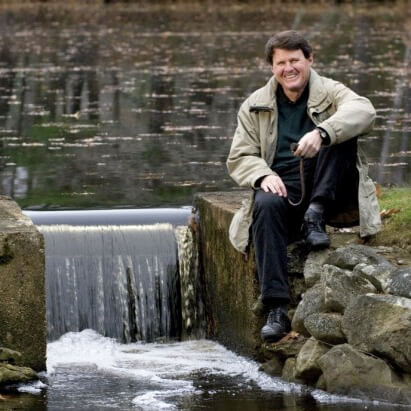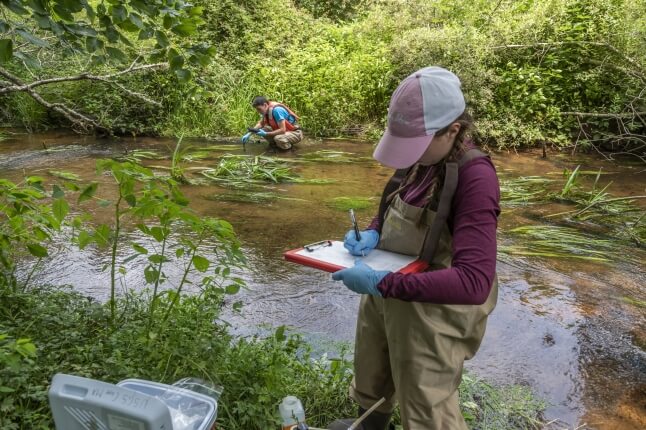News
John Briscoe, tamer of water. Photo by Jim Harrison, Harvard Magazine.
The following article appears in the January/February 2012 issue of Harvard Magazine. John Briscoe is the Gordon McKay Professor of the Practice of Environmental Engineering at SEAS and a Professor of the Practice of Environmental Health at Harvard School of Public Health.
In the little town of 5,000 where he now lives, John Briscoe holds the exalted title “master of the Todd Pond dam,” a tiny impoundment. He uses this role to introduce his students to the competing demands at the heart of water management.
“Everyone who lives on the pond likes the water to be kept high because it looks nice,” he explains. “But if you have a full lake and there is a lot of rain, water that overtops the dam will erode the base and you will lose your dam—which is a safety issue.” As the manager, therefore, Briscoe must monitor the weather. “If rain is coming, I go and take out a few boards to lower the level.” If the rain doesn’t materialize, a lot of swampy muck is exposed around the shoreline, and everyone asks him, “How come you lowered the dam?” The decision, he explains, was probabilistic.
Meanwhile, aquatic reeds grow and accelerate the accumulation of silt behind the dam, because “the natural course is to revert to being a swamp. But people don’t want to live on a swamp. They want to cut the trees around the pond so they can have a view; but that also speeds silting. How do you deal with human needs and environmental needs and safety? All of which, at a much lower level, are the issues of the great river systems in the world.”
Briscoe knows those great rivers well. In the world of water policy, he is the “damn dam guy” to some people, but in arid parts of the world, particularly in underdeveloped countries, he might be hailed as the “tamer of water”—if people on the street knew about his work.
Water issues are not just about scarcity or potability or floods, he explains—they are part religion, part politics, part civilization. “Take Three Gorges Dam,” he says. “From a distance it is perceived as the largest hydroelectric project in the world—which it is.” But what is the meaning of Three Gorges? “In Chinese history, the fall of emperors is associated in the popular mind with an inability to control floodwater: the emperor who does not control water will not last.” Dams are thus symbols of social order. “That symbolism, at least as much as the hydropower and flood control, is what Three Gorges is about”: the efficacy of the state. In India, where Briscoe lived for several years, the Ganges is deeply entwined in the country’s language,culture, history, and political order, he continues, as well as with such concerns as energy, health, agriculture, and the environment. “Water truly branches into all aspects of life.”
Read the full article in Harvard Magazine
Topics: Environment
Cutting-edge science delivered direct to your inbox.
Join the Harvard SEAS mailing list.



